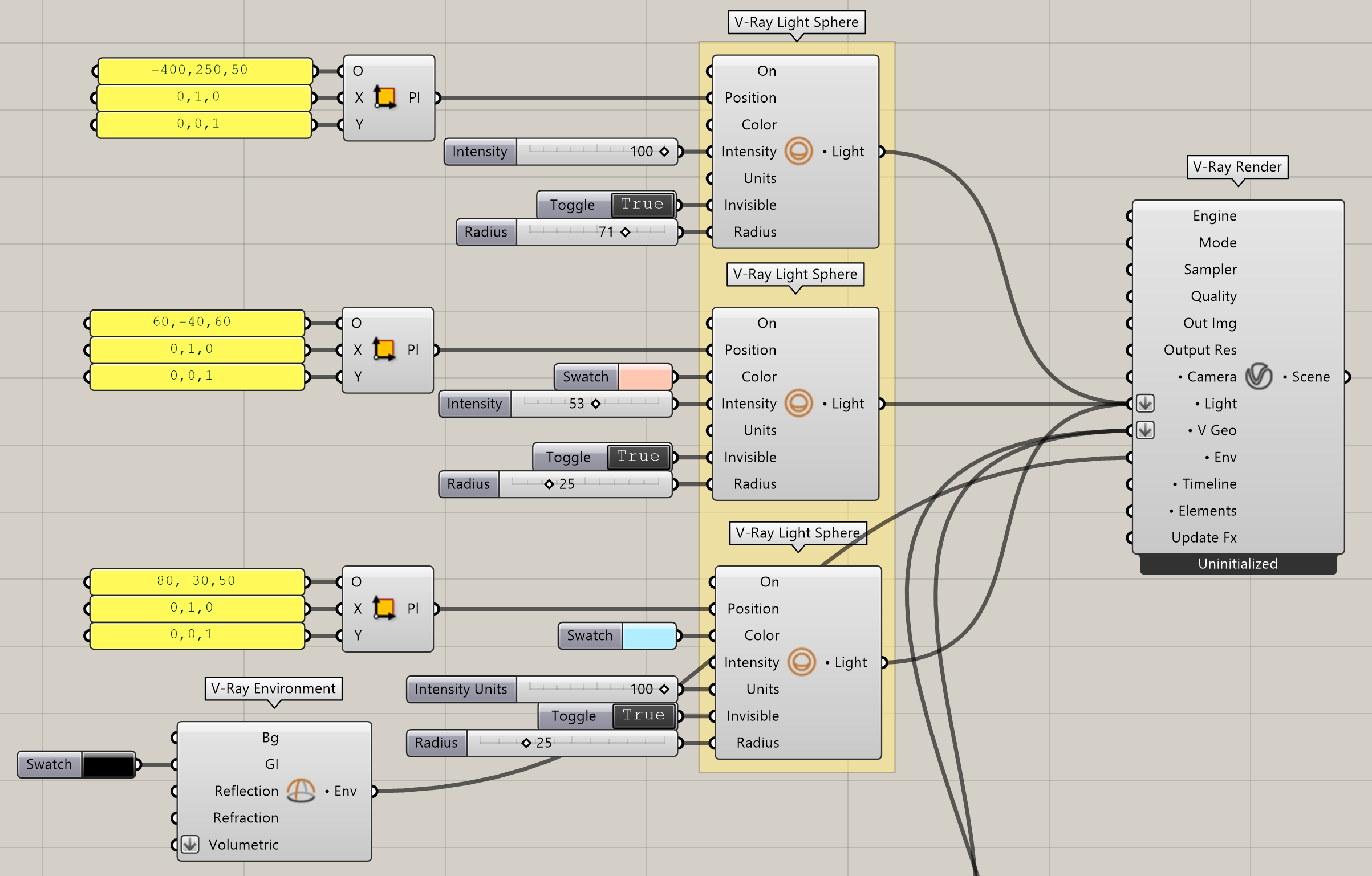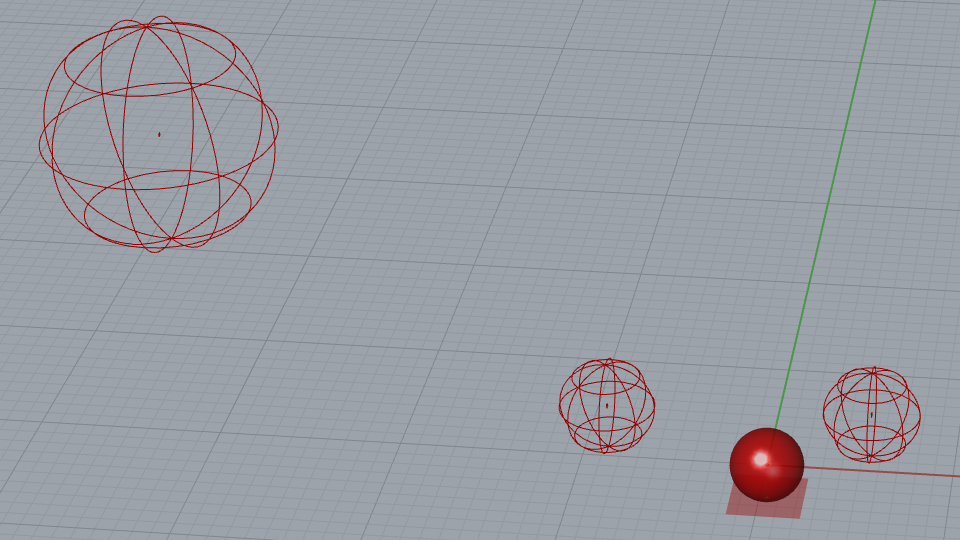This page provides information about the Light Sphere in V-Ray for Grasshopper.
Overview
V-Ray Sphere Light component creates a sphere light source. It can be connected to the V-Ray Render which automatically adds it to the rendered scene. If a list of input Positions is connected to this component multiple lights are generated. Multiple Radius values can also be used.
The Number of Instances tag at the bottom of the component indicates how many times the object is currently being instanced.
The number of input positions will determine the lights count. The number of Radius values will not affect the lights count.
Input Parameters
On (Boolean) – Enables or disables the light source.
Position (Point) – Sets the light source point position. If a list of input Positions is connected multiple lights are generated. Note that the number of input positions determines the lights count.
Color (Color) – Provides a slot to set a light source color.
Intensity (Number) – Provides an option to control the light source intensity. Calculated in the specified units.
Units (Integer) – Specifies the light unit of measurement. Using correct units is essential when working with physical camera exposure. The light automatically takes the scene units scale into consideration to produce correct result for the scale being worked in.
Default (Scalar) – The color and multiplier directly determine the visible color of the light without any conversion. The light surface appears with the given color in the final image when seen directly by the camera.
Luminous Power (Lumens) – Total emitted visible light power measured in lumens. The intensity of the light does not depend on its size. A typical 100W incandescent light bulb emits about 1500 lumens of light.
Luminance (lm/m^2/sr) – Visible light surface power measured in lumens per square meter per steradian. The intensity of the light depends on its size.
Radiant Power (W) – Total emitted visible light power measured in watts. The intensity of the light does not depend on its size. This is not the same as the electric power consumed by a light bulb. A typical 100W light bulb only emits between 2 and 3 watts as visible light.
Radiance (W/m^2/sr) – Visible light surface power measured in watts per square meter per steradian. The intensity of the light depends on its size.
Invisible (Boolean) – Makes the light source invisible. It does not affect the light source's illuminance.
Radius (Number) – Controls the size of the light source. Light intensity and shadow softness depend on the size. Bigger size leads to softer shadows and stronger illumination. Multiple Radius values can be used here. The number of Radius values does not affect the lights count.
Output Parameters
Light (Generic Data) – Light output that can be connected to a V-Ray Render component.
Example
Light Sphere component connection. Note that an Environment component with a black color plugged in the GI input parameter is used as an override to turn off the default Environment lighting. If there is no Environment input in the Render component V-Ray always creates one internally.


